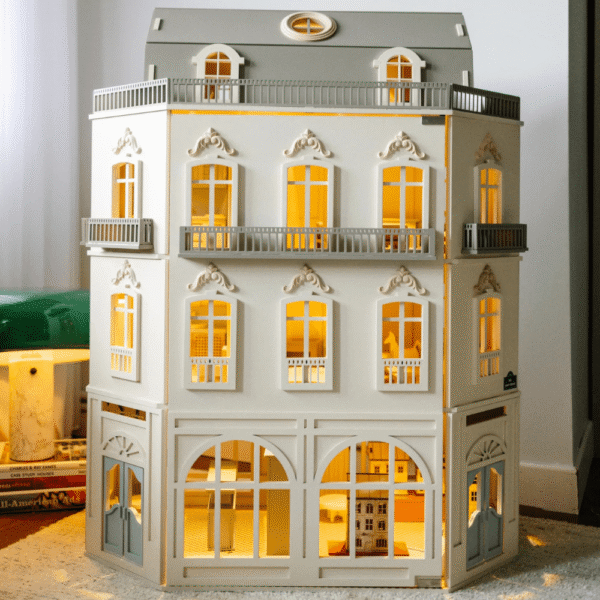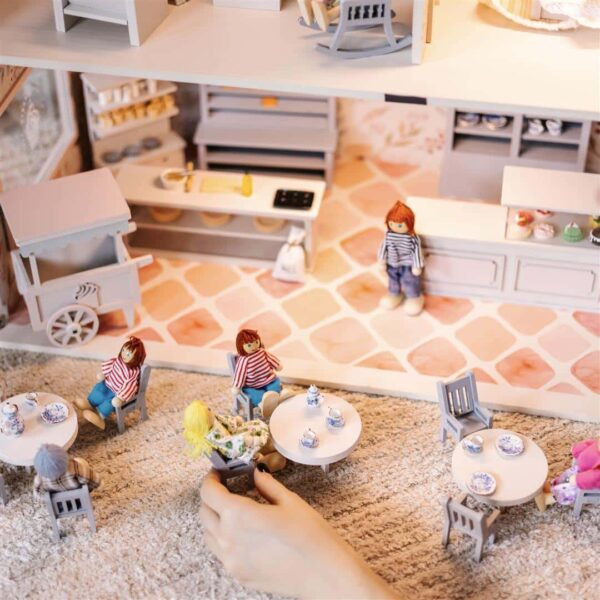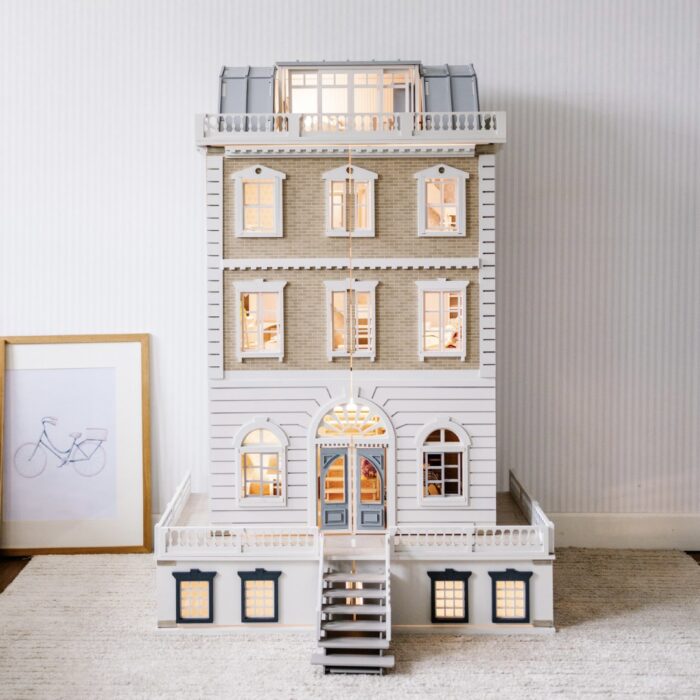How to Encourage Independent Play with Dollhouses for Toddlers

Independent play is a vital skill for young children, as it helps them develop confidence, creativity, and decision-making abilities. One of the best tools for encouraging independent play among toddlers is a dollhouse. In this blog post, we’ll explore how dollhouses for toddlers can foster independent play, boost cognitive development, and provide a fun and engaging way for little ones to learn about the world around them.
1. Choose Age-Appropriate Dollhouses and Accessories
When selecting a dollhouse for toddlers, it’s important to ensure that the dollhouse and its accessories are suitable for their age. Look for dollhouses with chunky pieces that are easy for small hands to grasp, and avoid any accessories with small parts that could be a choking hazard. Many toddler toys are designed with bright colors and simple structures that help keep young children engaged. The right dollhouse can spark a toddler’s imagination and allow them to interact with their little world safely and independently.
2. Set Up a Dedicated Play Area
Creating a specific space for dollhouse play is a great way to encourage toddlers to engage independently. Set up a small play area where they can access their dollhouse without distractions. Keeping all accessories and furniture nearby will help the toddler stay focused and give them the freedom to decide how they want to play. By having their own dedicated space, toddlers can feel more in control, which promotes independent play and self-reliance.
House of New York
Here is the masterpiece of Little Forest Animals: the House of New York! With its basement, mezzanine, and attic, totaling 6 floors, this giant dollhouse also holds the distinction of being the world’s largest dollhouse. Shaped with New York architecture, this unique dollhouse will capture the hearts of children and adults alike. A work of art to be passed down to future generations, featuring entirely handmade and specially decorated furniture. It eagerly awaits to meet you with a living room and kitchen on the ground floor, a study room and library on the mezzanine, a children’s room and guest room…
3. Offer Gentle Encouragement
Encouraging independent play doesn’t mean leaving your toddler entirely on their own. Stay nearby and offer gentle support if they need it. Toddlers may sometimes need reassurance before they feel confident enough to play independently. You can ask simple questions like, “What is your doll doing now?” or “Can you show me where the doll sleeps?” These prompts help toddlers stay engaged while still maintaining the independence they need to explore their dollhouse on their own.
4. Let Them Take Charge
Allowing toddlers to take charge of their dollhouse world is key to fostering independent play. Let them decide how to arrange the rooms, where the characters should go, and what actions take place. The less structured their playtime, the better it is for encouraging creativity and self-directed learning. Dollhouses provide endless opportunities for toddlers to create their own stories, solve problems, and learn through exploration—all of which are essential components of independent play.
5. Encourage Storytelling
Dollhouses for toddlers provide a perfect setting for storytelling. Toddlers naturally love to create stories, and a dollhouse gives them the tools to bring these stories to life. Encourage your child to narrate what is happening in the dollhouse, whether it’s putting the dolls to bed, making dinner, or going on an adventure. This not only helps with language development but also allows toddlers to practice independent play by guiding the storyline themselves.

6. Rotate Accessories to Keep Play Fresh
To maintain your toddler’s interest in the dollhouse, try rotating the accessories and furniture every few weeks. Introducing new items or changing the setting will provide new opportunities for imaginative play, keeping the experience exciting. Toddler toys that can be used interchangeably with the dollhouse also help to keep things interesting and provide new challenges, promoting extended independent play.
Conclusion
Independent play is crucial for a toddler’s development, and dollhouses are an excellent tool to support this growth. By providing age-appropriate dollhouses, creating a dedicated play area, and offering gentle encouragement, parents can help their toddlers gain confidence and develop a love for independent play. Encourage your child’s imagination to soar with our wonderful collection of dollhouses for toddlers at Little Forest Animals, and watch as they learn to explore their world independently!
FAQ
Q: What type of dollhouse is best for toddlers? A: A dollhouse with large, chunky pieces and bright colors is ideal for toddlers. It should be easy for small hands to manipulate and free of small parts that could pose a choking hazard.
Q: How can I encourage my toddler to play independently? A: Create a dedicated play space, offer gentle encouragement, and allow your child to take charge of their dollhouse play. Providing opportunities for them to make their own decisions will help build their confidence in independent play.
Q: Is dollhouse play beneficial for my toddler’s development? A: Absolutely! Dollhouse play helps toddlers develop important skills such as creativity, problem-solving, language development, and independent play. It provides a safe and imaginative way for them to learn about the world.





